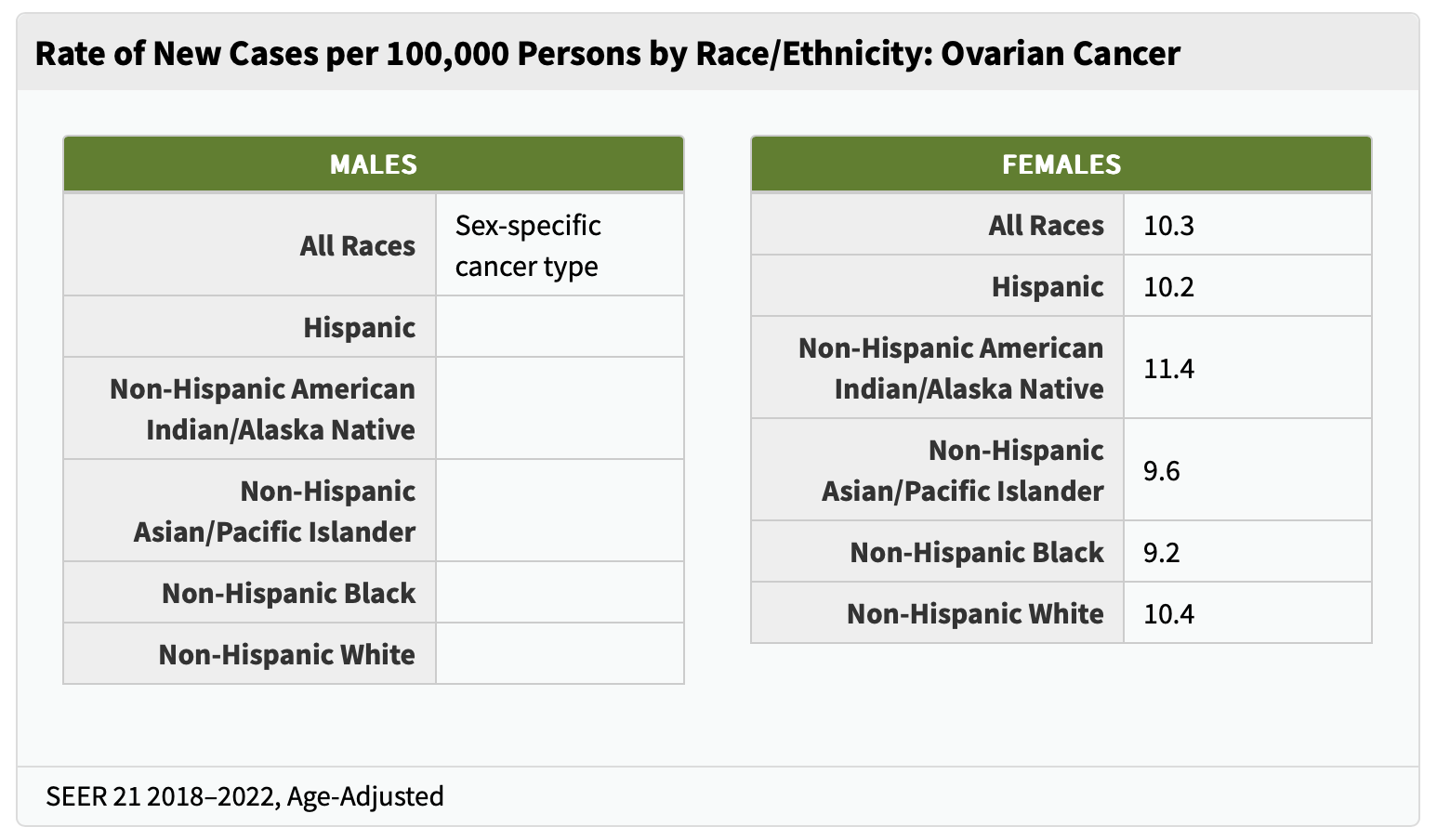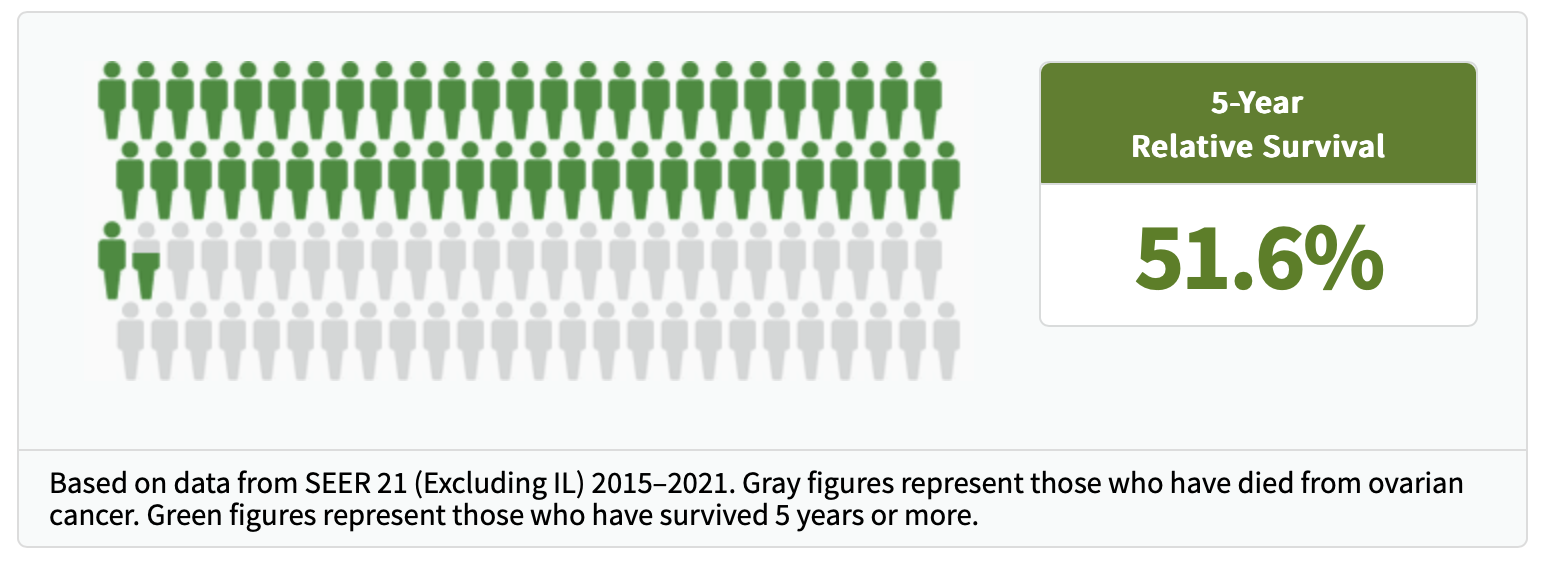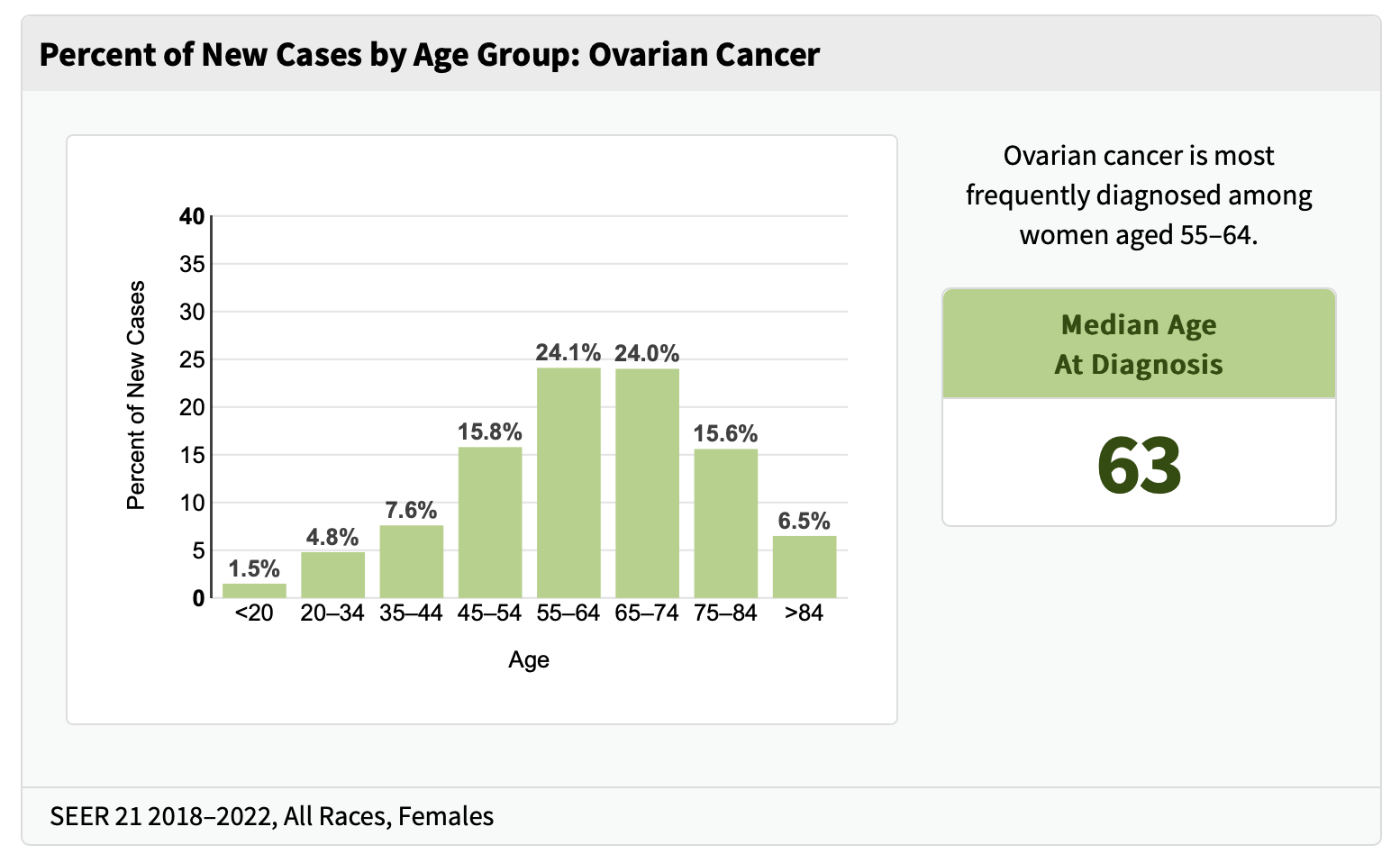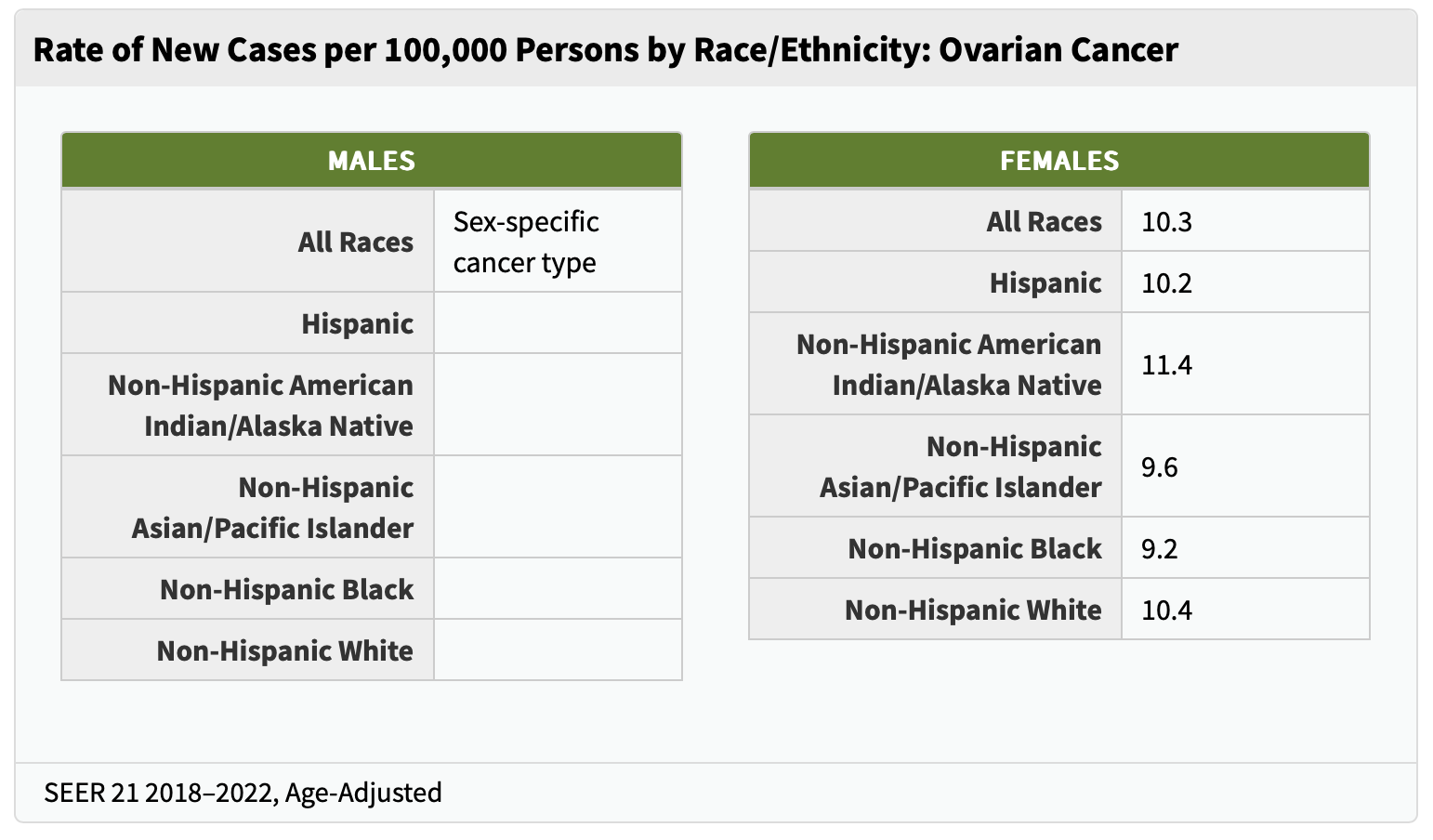
Ovarian Cancer Statistics and Survival Rates
Ovarian Cancer Statistics
While statistics can provide insight, remember that every individual's journey is unique.
In This Section
Ovarian Cancer Statistics at a Glance
Doctors in the U.S. report cancer diagnoses to state registries, overseen by the CDC’s National Program of Cancer Registries and the SEER Program of the National Cancer Institute. These programs cover the entire population, providing comprehensive data on cancer statistics.
- In 2025, an estimated 20,890 new cases of ovarian cancer will be diagnosed, and 12,730 women will die from the disease in the U.S. (American Cancer Society).
- Mortality rates for ovarian cancer have declined over the past forty years, while other cancers have seen greater reductions.
- As of 2022 in the United States approximately 243,572 women were alive who had been diagnosed with ovarian cancer (including those who had been cured of the disease). (SEER Program)
- Ovarian cancer accounts for 1% of all new cancer cases in the United States.
- While the 11th most common cancer among women, ovarian cancer is the fifth leading cause of cancer-related death among women.
- Ovarian cancer is the deadliest of gynecologic cancers.
- Mortality rates are slightly higher for African American women than for Caucasian women.

Ovarian Cancer Lifetime Risk and Survival Statistics
It’s important to be aware of the risk factors for developing ovarian cancer, as well as average rates of diagnosis. Five-year survival rates are commonly used to compare different cancers. Survival rates vary greatly depending on the stage of diagnosis.
- A woman’s lifetime risk of developing ovarian cancer is 1 in 91.
- A woman’s lifetime risk of dying from invasive ovarian cancer is 1 in 143.
- Ovarian cancer survival rates are much lower than other cancers that affect women.
- The relative five-year survival rate for ovarian cancer is 51.6% percent.

Ovarian Cancer Statistics By Age
- Ovarian cancer rates are highest in women aged 55-64 years.
- The median age at which women are diagnosed with ovarian cancer is 63, meaning that half of women are younger than 63 when diagnosed with ovarian cancer and half are older.
- The median age of death from ovarian cancer is 70.

Ovarian Cancer Cases By Race
